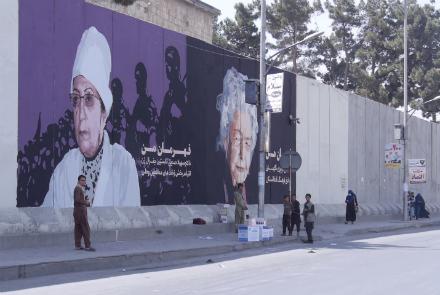Just days after the death of legendary Nancy Dupree, a new mural appeared in honor of the American who dedicated most of her life to preserving Afghanistan’s history.
The 90-year-old Dupree died on Saturday night in a Kabul hospital.
Murals, painted mostly on T-walls in the capital, have become common place and mostly depict images and words calling for an end to a wide range of social problems.
Some carry anti-corruption messages, others deter migration and some promote children’s rights among others.
This time, the mural of Dupree, which states “My Hero” and below that “the honest guardian of Afghanistan’s culture”, has been painted alongside Suhaila Seddiq, the first female army general in Afghanistan.
The mural, by Kabul's ArtLords, is on a wall close to the ministry of public health, near Massoud Circle.

The T-walls around the Ministry of Labor, Martyrs and Social Affairs meanwhile send out a message against child marriages.
Fatah Ahmadzai, a spokesman for the ministry, said the murals were aimed at raising public awareness regarding social problems including child marriages.
“With these images, we want to highlight social problems and strive hard to end the challenges,” he said.
Kabul residents welcome the murals and said they are happy when new ones are painted.
“Many of those who cross here, look at the pictures for some seconds and read their messages,” said Habibullah, a resident of Kabul.
“These paintings have added to the beauty of the city and also they convey good messages to the citizens,” said Wahid, a resident of Kabul.
According to a psychologist, Sayed Jafar Ahmadi, highlighting problems through such murals can have a good effect on the public and they can improve the level of literacy among the people.
“When people see the pictures they think about them and go deep into them,” Ahmadi said.
“By thinking about them and looking at the murals, it can get to their consciences as the people can see whether they (the paintings) are about moral (values) or corruption issues.”


